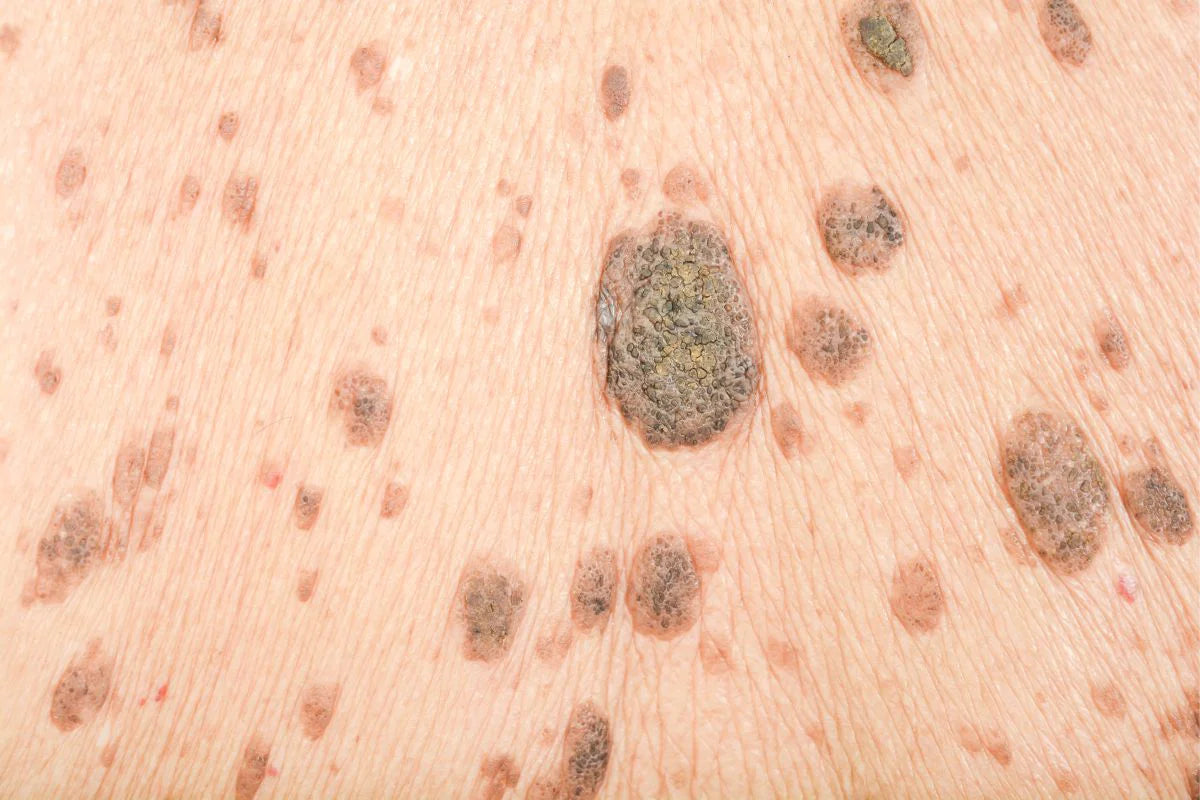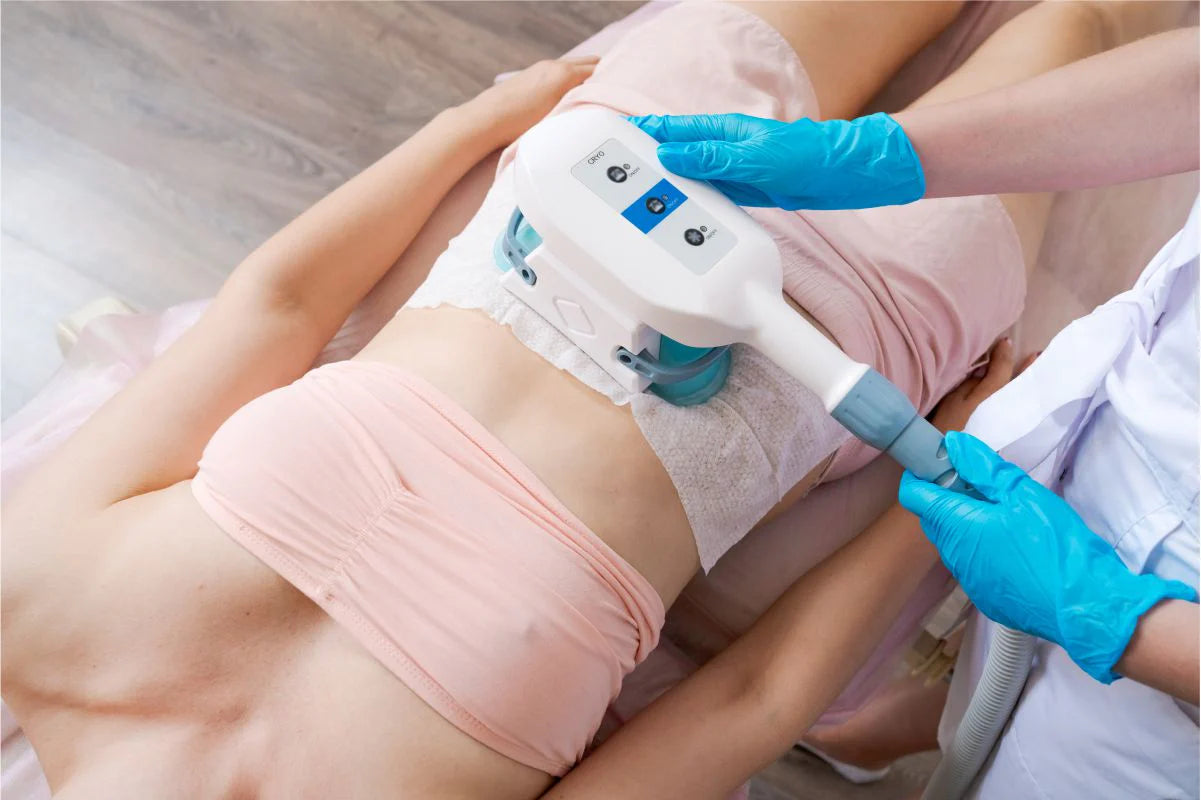Unveiling the Mystery: What Causes Skin Tags and How to Prevent Them?

Ever found a small, fleshy growth on your skin and wondered what it could be? You're not alone. These little bumps, known as skin tags, are a common skin anomaly that affects many of us. But what causes them? That's what we're delving into in this article.
We'll be exploring the ins and outs of skin tags, from their typical appearance to the factors that may contribute to their development. Though they're not cancerous, they can sometimes be mistaken for more serious skin conditions. So, we'll also touch on the importance of professional diagnosis and safe removal methods.
Join us as we unravel the mystery behind these skin growths. It's time to put your concerns to rest and arm yourself with the knowledge you need about skin tags.
Key Takeaways
- Skin tags, or acrochordons, are a common skin anomaly affecting adults. Contributing factors include obesity, diabetes, metabolic syndrome, and family history.
- Typical locations for skin tags include areas where clothing rubs against the body or where skin-to-skin interaction occurs.
- Development of skin tags can be a sign of underlying hormonal or endocrine anomalies. Professional consultation and a thorough skin examination are necessary for accurate diagnosis.
- Factors such as genetic influences, hormonal changes, and skin irritation contribute to the appearance of skin tags. Professional services like Skin Reform offer solutions for safe skin tag removal.
- Risk factors for developing skin tags include age, obesity, diet, diabetic conditions & HPV virus. People in their 50s or 60s, overweight individuals, and those with Type 2 diabetes or metabolic syndrome are especially prone.
- It's important to differentiate skin tags from other skin growths. Their diagnosis is usually achieved through a visual examination.
- Prevention and management of skin tags depend largely on lifestyle adjustments, including maintaining a healthy weight and regular skincare. It's essential to seek medical advice for significant changes in skin tags or associated discomfort.
Understanding Skin Tags
Skin tags, or acrochordons, present as soft excrescences of heaped-up skin. These benign cutaneous growths often raise intriguing questions regarding their appearance and proliferation. Nonetheless, almost 50 to 60% of adults develop at least one skin tag in their lifetime. Variables such as obesity, diabetes, metabolic syndrome (MeTS), and family history enhance the likelihood of skin tag occurrence.
In essence, skin tags strike equal chords with both genders. In this section, we aim to cast a spotlight on skin tags, unmasking their locations, classification, pathophysiology, and the collaborative role of multifaceted teams in skin tag management.
Common Locations for Skin Tags
It's pertinent to note, skin tags aren't choosy; they could make a spot of any region of your body their new home in the presence of friction. Precisely where clothing rubs against the body or where skin-to-skin interaction occurs frequently. Common strife zones for skin tags include the neck, underarms, eyelids, body folds such as under the breasts or in the groyne area.
Skin tags, indeed, seem to go hand-in-hand with obesity, as extensive skin folds and creases create ample friction zones. Genetic factors also seem to play a role in skin tag manifestation, thereby making skin tag occurrences inevitable.
Nevertheless, the development of multiple skin tags could indicate underlying hormonal or endocrine anomalies such as polycystic ovary syndrome and acromegaly. Hence, medical consultation and a thorough skin examination, especially utilising professional skin tag services, are paramount for correct diagnosis and treatment.
One such trusted professional service provider is Skin Reform who excel in skin tag removal. With Skin Reform, you aren't just getting a skin tag removal near you; you're embarking on a journey to healthier skin with experts who understand its value and care for it meticulously.
In the upcoming segments, let's delve deeper into the realm of skin tags, examining the potential complications involved with their removal.
what causes skin tags?
Before you find yourself typing 'skin tag removal near me' in a flurry of panic, let’s talk about what causes these annoying little buggers. You'll find that understanding the why behind skin tags may enrich the way you approach skin tag removal services like those offered by Skin Reform.
Genetic Influences
"Like daughter like mother," you commonly hear when it comes to stories of inherited traits. But did you know that this can apply to skin tags too? Yes, those pesky little things can be the result of your gene pool. If your folks have skin tags, chances are, you won't be left out from the skin tag party.
Research indicates that individuals with a family history of skin tags have a higher likelihood of developing them. Genetic factors can impact various facets of skin health, primarily influencing the risk of developing benign growths like, you guessed it, skin tags!
Hormonal Changes
Ever noticed how life seems like a rollercoaster of hormonal changes? Puberty, menstruation, pregnancy, menopause – they're all chapters of the big hormonal book of life. Hormonal fluctuations during these periods can alter skin's elasticity and collagen production, promoting a skin environment ripe for skin tag formation. Conditions like polycystic ovary syndrome (PCOS) further enhance skin tag development due to high levels of androgens, male sex hormones. Even beauty isn't immune to hormones' whims!
Friction and Skin Irritation
No one appreciates when things rub them the wrong way, including your skin. Skin friction, caused by skin rubbing against skin or clothing, is another notable cause of skin tags. It's as if your skin decided to create its own tiny pacifistic protest sign against irritation!
Common trouble spots include body folds such as the neck, underarms as well as areas prone to chub rub. This just reminds us of the importance of treating our skin gently, doesn't it?
Remember, if you are not alone in your struggles with skin tags. Clinics like Skin Reform offer a range of skin tag services designed to ease your discomfort.
Risk Factors for Developing Skin Tags
In this section, we'll delve into the factors that put you at risk of developing acrochordons, commonly known as skin tags. While anyone can get skin tags, some elements indeed raise the odds. Skin tag removal treatments are readily available at our Skin Reform Clinic, but let's first unravel why these pesky tags might be gracing your skin.
Age and Predominance
Age isn't just a number, especially when it comes to skin tags. Approximately a third of individuals in their 50s or 60s experience these little skin-based annoyances. That's right, skin tags appear more often on older adults. This swing in skin tag predominance, when we age, makes it evident that our golden years bring not only wisdom but also an increased chance of these benign growths.
Remember, if the sight of these skin tags bothers you, our 'skin tag removal near me' service at Skin Reform is always ready to assist.
Obesity and Diet Related Risks
Extra body fat can be a ticket to many health issues, skin tags being one among them. Research shows a significant correlation between body mass increase and the development of skin tags. So, your weight doesn't only tweak your waistline but also your likelihood of acrochordons. Moreover, obesity often walks hand in hand with insulin resistance and higher insulin levels, which can boost the growth of skin cells, contributing to skin tag formation.
If you're frustrated googling 'skin tag clinic near me,' rest assured, our Skin Reform offers efficient skin tag services designed to meet your needs.
Diabetic Conditions
Diabetes seems to have a curious relationship with skin tags. People with Type 2 diabetes are more likely to sport skin tags, hinting at a connection. Additionally, often people with skin tags have metabolic syndrome, a group of conditions that amplify your risk of health issues such as stroke and heart disease. Metabolic syndrome signs like high blood sugar and insulin resistance may pave the way for skin tags to develop.
Identifying and Diagnosing Skin Tags
Skin Tag Features
Acrochordons, better known as skin tags, represent a common dermatological issue we encounter in our day-to-day experience at the skin clinic. Usually harmless, these growths can range in size from half a millimetre up to 2.5 millimetres in diameter. They often appear on a thin stalk, or peduncle, making them pendulated.
When visually observed, skin tags frequently have a soft, round appearance. Routinely, they mimic the colour of the individual's skin, or may be somewhat hyperpigmented. Frequently, the neck, axillary region, and groyne are the skin tag’s preferred locations.
Histological analyses of skin tags can reveal a mild hyperkeratotic epidermis. Within the dermal stroma, you can discern the presence of blood vessels of various sizes. Intrinsically, the dermal layer has loosely displaced collagen fibres, along with dilated capillaries and lymphatic vessels. It’s of note that usual skin appendages go unnoticed in the classic skin tag lesion.
Differentiation from Other Skin Growths
Crucial to the success of any skin tag removal service, including ours at Skin Reform, is the proper differentiation of skin tags from other skin growths. A host of conditions may bear a resemblance to skin tags, including dermatologic manifestations of disorders such as neurofibromatosis type 1, genital warts, melanocytic nevi, and non-genital warts.
Particularly, hyperpigmented skin tags are often associated with melanocytic nevi. Even seborrheic keratosis, at times, appears similar to skin tags. More infrequently, premalignant fibroepithelial tumours, otherwise known as Pinkus tumours, appear in the differential diagnosis.
A definitive diagnosing of skin tags is achievable through a visual examination. Yet, if you notice changes in a skin tag's appearance, feel pain, or harbour uncertainties about a growth, it's suggested to consult with us or your local Dermatologist promptly. A professional diagnosis eliminates the risk of mistaking other skin growths for skin tags.
Remember, asking for "skin tag removal near me" on your favourite search engine might not prove sufficient. You deserve the right diagnosis and treatment. Therefore, for excellent skin tag services, opt for Skin Reform.
Prevention and Management
In this section, we'll delve deeper into how one might prevent or manage skin tags. Understanding the preventative measures and when it's crucial to seek medical help play a significant part in the overall management of these benign skin growths.
When to Seek Medical Advice
Despite skin tags being mostly harmless, it's crucial to consult a healthcare professional if changes such as growth in size, shape, or colour are observed. Similarly, if skin tags start causing discomfort, get irritated, or start bleeding, it's essential to seek help. We recommend consulting a board-certified dermatologist or visiting a trusted skin clinic such as Skin Reform.
Skin Reform provides comprehensive skin tag removal services. These include cauterization, a procedure that involves burning off the tag using heated tools, and surgical removal, including simple procedures where the tag is snipped off at its base. They ensure all their procedures are quick, appropriately managed to minimise discomfort, and strategically executed by professionals to mitigate the risk of complications, like infections or scarring.
So, if “skin tag removal near me” is a frequent search on your engine, look no further than Skin Reform. Their proficient 'skin tag service' ensures you're in good hands.
Effective prevention and management of skin tags depend greatly on healthy lifestyle choices and prompt medical advice when necessary. Ultimately, the choice of whether or not to remove skin tags boils down to personal preference and comfort.
Conclusion
We've walked you through the ins and outs of skin tags and the importance of accurate identification. We've emphasised the role of lifestyle choices in managing these benign growths. Remember, maintaining a healthy weight and blood sugar levels can help. Regular moisturising and using syndet bars are also beneficial. If skin tags become bothersome or change, don't hesitate to seek medical advice. At Skin Reform, we're always here to provide comprehensive removal services, including cauterization and surgical procedures. Whether you choose to remove your skin tags is ultimately up to you, and we respect your decision. We believe in providing the knowledge and tools you need to make an informed choice about your skin health.
Frequently Asked Questions
What method does Skin Reform use to remove Skin tags?
Skin Reform uses the coagulation method to remove skin tags. This non-invasive technique involves applying a high-frequency electric current to the skin tag, causing it to coagulate and eventually fall off. The process is precise, effective, and requires no surgical incisions, resulting in minimal downtime and quick recovery. Some patients may experience slight discomfort and temporary redness, but these symptoms are typically short-lived.
Why am I suddenly getting skin tags?
Skin tags often develop where skin constantly rubs against skin or clothing. They commonly appear on the neck, underarms, and eyelids, as well as within body folds like under the breasts or the groin area.
Does toothpaste remove skin tags?
No clinical evidence suggests that toothpaste or other home remedies are effective for skin tag removal. These methods could risk infecting or irritating the skin. It is always safer to consult a dermatologist for such concerns.
What is the least painful way to get rid of a skin tag?
One less painful method involves tying dental floss tightly around the base of larger skin tags. This method cuts off circulation to the tag, causing it to dry up and fall off after a few days. However, it is recommended to proceed under medical guidance.
Can I cut off a skin tag with nail clippers?
Cutting off skin tags using nail clippers, scissors, or any other similar methods is highly discouraged as skin tags have blood vessels, and such actions might result in uncontrollable bleeding. Always consult a medical professional before attempting removal.




